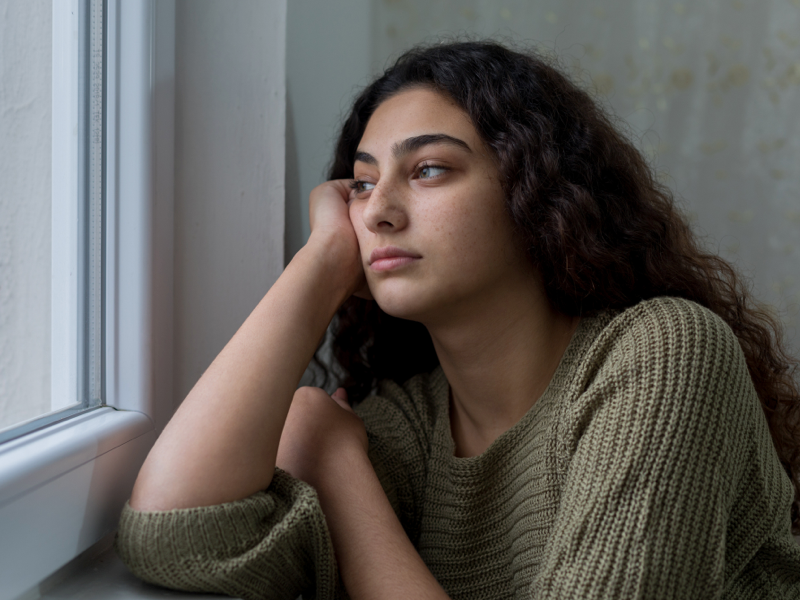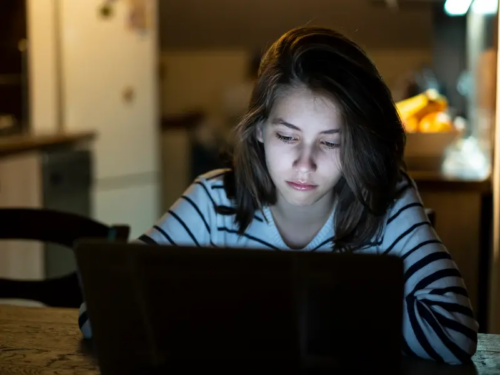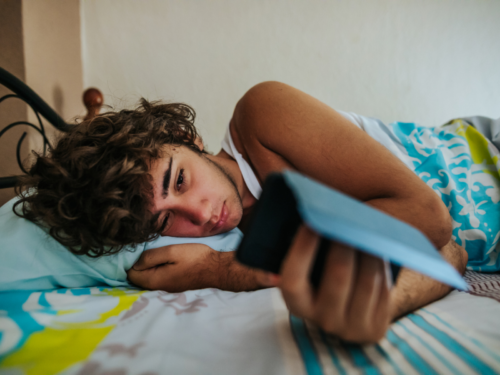
Table of Contents
Isolation’s Silent Role in the Teen Mental Health Crisis

Written By: Dr. Caroline Fenkel, DSW, LCSW
September 8, 2022
6 min.
Dr. Caroline Fenkel, Co-Founder & Chief Clinical Officer at Charlie Health, shares her take on how social isolation is contributing to anxiety, depression, and more for today’s youth.
Learn more about our Clinical Review Process
Table of Contents
Earlier this month, the New York Times podcast, “The Daily,” published a detailed look at the mental health crisis affecting today’s youth. More specifically, they investigated the discrepancy between the spike in mental health disorders and the nation’s preparedness (or lack thereof) to provide care—even after the COVID-19 pandemic exacerbated a decline in teen mental health. A year’s worth of research painted a grim picture of more major depressive episodes, emergency room visits, and suicide attempts from teens across the nation than ever before.
But times have changed.
For years, the greatest public health concerns for teens were binge drinking, drunk driving, teen pregnancy, and cigarettes—all externalized risks. And while these behaviors continue to persist, recent years have marked a shift toward a new, internalized, public health concern: isolation and its effect on mental health.
In general, teens are experiencing less face-to-face social interactions with their peers—including acts as simple as seeing a movie or taking a drive—than previous generations. As a millennial myself, I can recall going bowling with friends or rushing home from a house party to make my curfew. While today’s teens are certainly still having parties, socialization tends to look a bit different, and much of it is even virtual (more on the phone paradox later).
A 40-year national survey of 8 million adolescents found that the percentage of high school seniors who said they often felt lonely increased by 50 percent from 2012 to 2017. A greater number of 12th graders also reported feeling left out in social situations (up from 30 percent in 2012 to 38 percent in 2017), according to the report.
To expand on that, loneliness and social isolation are both terms used to describe a person’s social disconnection. Loneliness is a more subjective look at how socially connected a person actually is versus their desired level of social connection, while isolation is an objective measure of a person’s regular interactions with others.
Research shows a strong link between social isolation and an increased likelihood of anxiety and depression in children and adolescents. Social isolation can cause symptoms of depression—one of the most common mental health disorders in the country—feelings of hopelessness, fatigue, and dark or suicidal thoughts. It can also increase the risk of suicidal ideation.
Social isolation can be voluntary or involuntary, short-term or long-term—and the longer isolation lasts, the harder it can be to overcome. If you’re currently wondering if your child or someone you know is suffering from social isolation, consider the following signs:
- Excessive worry or sadness
- Dreading or avoiding social interactions
- Canceling plans (and being relieved not to go)
- Panicking at the thought of social interactions
- Spending large amounts of time alone
- Limiting your contact with others
In a world where we’re more connected than ever, how is it possible for teens to feel lonely enough that it’s contributing to a mental health crisis?

First, we come back to the phone paradox. For most teens, smartphones are a source of connection; they allow them to stay in touch with friends, make new ones, and discover a sense of community that extends beyond their home and family. However, phones are also a point of disconnection and a potential source of loneliness and isolation. Whether it’s seeing that they were excluded from a social event or feeling envious of the lives of influencers, phones can cause teens to actually feel more disconnected or even ostracized from their social circles.
Another, less obvious, trigger for isolation might be that teens are going through puberty—that rite of passage when a person’s body begins to change and develop—at an earlier age. As the The Daily touched on, we tend to associate puberty with sex or physical changes, but in reality so much of this transformation is linked directly to the brain.
“The brain is preparing this creature to be aware of social information, to crave social information, as a way of figuring out how to fit into a much more complex world than the one where the child was cared for, explains reporter Matt Richtel on The Daily. “Hierarchy becomes apparent, competition becomes apparent, all this information…suddenly becomes vivid.”
And when the parts of our brain that process feelings and stimulation aren’t on the same page with your developing body? That’s what Richtel coined a “neurological mishmash.”
Puberty naturally changes how people think about themselves and how they relate to others. However, when teens mature earlier than they might be ready to, the dissonance between the physical changes and their cognitive and emotional development can cause a range of psychosocial problems—such as anxiety, depression, substance use, and risky behavior. Add in today’s academic pressures, the ongoing threat of climate change, and incidents of mass violence; it almost makes you want to, well, isolate yourself to try to process the internal and external changes.
So now we know the problem, we have an idea about what’s causing it, and we just need to find the solution.
As I reflect on the reasons that teens feel so isolated these days and how to help, I can’t help but compare teenagers to a big block of swiss cheese (because who doesn’t like a cheese analogy?). Swiss cheese is full of holes, which represent risk factors such as exposure to poverty, bullying, trauma, and conflicts at home. Also, climate issues, school shootings, career confusion, and financial instability—the list of holes goes on.
The rest of the cheese represents the protective factors, such as a calm household, a healthy relationship with technology, high socioeconomic status, and access to a support system. A teen’s mental health depends on how exactly the cheese stacks up, but the onus of that layering shouldn’t be on them.
It should be society’s job to cover some of those holes, or risk factors, in order to protect and promote mental wellbeing. From a public health and health systems perspective, that means knocking down leading barriers to care—such as lengthy appointment wait times, financial hurdles, mental health stigma, and a societal inclination toward medication as a quick fix.
One way that Charlie Health focuses on this systemic change is by increasing access to therapies that are focused on helping teens process intense emotions and work through change. Practices like cognitive behavioral therapy (CBT) are a way to respect what teens are going through, while providing the necessary skills to cope. The solution may also come back to combating isolation by creating a better sense of community. In a world where teens are growing apart, we believe in a care model that prioritizes connection, community, and collective healing.
If you think that someone you know might benefit from additional mental health support, consider getting help today.
Connect with the Charlie Health community
Social isolation is just one component of a larger mental health crisis that is affecting today’s youth. If you or a friend is struggling with anxiety, depression, or understanding how to navigate your changing emotions, know that Charlie Health is here to help. Our intensive outpatient treatment programs provide high-quality, comprehensive treatment solutions in a safe, supportive space.





